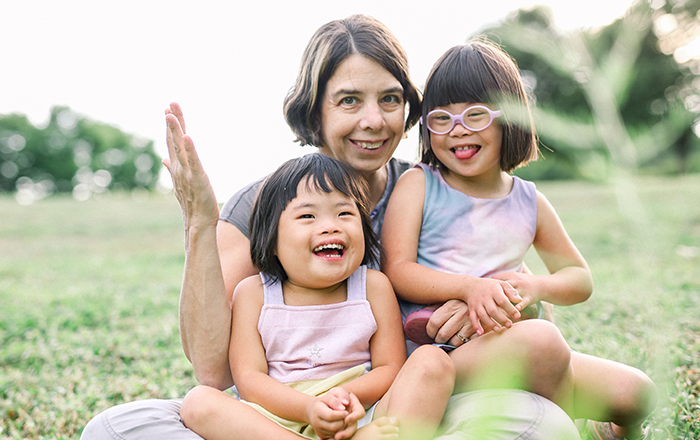A bright spot in the gloom of midwinter is the arrival of my garden catalogs. They appear in the mailbox sometime between Christmas and Easter, when the days are short and dark and clouds seem to be in permanent residence.
Whenever I need a pick-me-up, I page through the catalogs and linger over pictures of dewy spring blossoms: hot pink and purple anemones, vivid yellow daffodils, royal blue and gold crocuses. I read the glowing descriptions—“hardy,” “disease resistant,” “beautiful blooms”—and wonder how each flower would fare in my garden. I used to have plenty of time for gardening. I drew up elaborate plans, bought just the right plants, and carefully placed and nurtured them. That was when it was just the two of us.
Years ago, my husband and I wanted to have children, but nature wasn’t cooperating. Then one of his co-workers, a single adoptive mom, sent some copies of Adoptive Families home with him. I hadn’t yet seriously considered adoption, so I flipped through the magazines with a sense of duty. But soon I was hooked, and I eagerly awaited new issues. Seeing the children in the pictures—those who had already come home, and those who were waiting for families—was a revelation. I studied their smiles, their bright eyes, their shining faces, all different and all so lovely.
[10 Lists to Help You Prepare for Adoption]
Looking from one picture to another, I began to feel something familiar that I couldn’t quite put my finger on. Finally, I realized that it was the feeling I get when the garden catalogs begin to arrive in winter. It was a feeling of hope, the feeling that spring is near and that new life is possible. And I began to wonder how it would be to grow a family with a child like those in the pictures. I began to think, “I want to adopt a child.”
Not long after that, inspired in part by those pictures, my husband and I decided to pursue adoption. Coming face to face with our first child, and later our second—each with a mind and will of her own—brought home the realization that adopting a child is, after all, nothing like ordering a plant from a catalog. When you order a pink tea rose, you expect to receive a pink tea rose. However, after choosing a country to adopt from and expressing our preferences as to gender, age, and health, my husband and I still had no idea who our children would turn out to be. We had to wait for them to reveal themselves.
And that is one of the gifts that adoption has given us. It is nearly impossible to have rigid expectations for our children. We see them for who they are, not what we expect them to be. We don’t hover over them waiting to see whether they will inherit our abilities or weaknesses, our tastes or aversions. We watch them unfold without steering them in one direction or another.
One of our children has a knack for math, the other is a naturally talented dancer, and the fact that they could never have inherited these aptitudes from us doesn’t for a moment diminish our pleasure in their achievements. How much fun would it be to raise a Mini-Me, anyway? We give our children the freedom to grow in their own ways, and they bring us new life and fresh possibilities.
[Instant eBook: How to Raise Adopted Children]
I don’t have much time for gardening these days. My yard holds a few bulbs and the perennials and shrubs that have managed to survive my neglect. But I look out the window, and running across the dandelion-studded lawn are my two daughters—strong, smart girls who surprise and delight us every day. They are hardy, and disease resistant, mostly, and oh, how beautifully they bloom.



